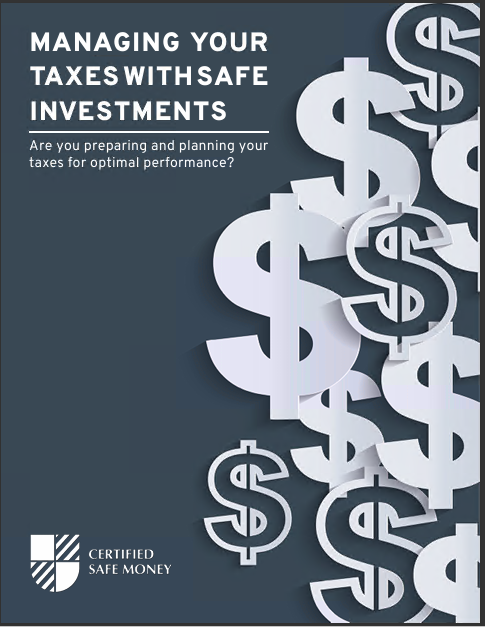Key Takeaways
-
Misunderstanding or neglecting life insurance needs can significantly weaken your retirement stability.
-
Careful planning, reviewing policies regularly, and understanding costs are essential for protecting your financial future.
1. Underestimating How Much Coverage You Need
Life insurance isn’t just about having a safety net—it’s about ensuring your loved ones maintain financial stability after you’re gone. Many people, maybe including you, underestimate how much coverage they truly need. This is one of the most common mistakes made in 2025.
What’s the Big Deal?
If your coverage is too low, your family could struggle with debts, mortgages, and living expenses. It could also mean exhausting retirement funds or investments prematurely, leaving your partner or beneficiaries vulnerable.
What Should You Do?
-
Evaluate your current debts, mortgages, and future expenses like education or healthcare.
-
Consider your income replacement needs (typically 10-15 times your annual income).
-
Regularly update your coverage amount, especially after significant life events.
2. Confusing Life Insurance with Retirement Investments
Another critical error you might be making is treating your life insurance as a primary retirement savings vehicle. While certain policies offer investment features, they shouldn’t entirely replace traditional retirement savings accounts.
Why Mixing Insurance and Investment Can Hurt
Permanent life insurance policies (like whole or universal life) do accumulate cash value, but they typically provide lower returns compared to traditional retirement accounts. Excessively relying on these policies for retirement funding in 2025 can significantly slow down your wealth-building process.
How to Keep Things Separate
-
View life insurance primarily as protection, not as your primary retirement investment.
-
Keep contributing regularly to retirement-specific accounts like IRAs and 401(k)s.
-
If you have permanent life insurance, periodically assess its performance and fees compared to alternative investments.
3. Forgetting to Regularly Review and Update Beneficiaries
Have you checked who’s listed as your life insurance beneficiary lately? Many policyholders in 2025 continue to overlook this simple but crucial step.
How This Oversight Could Cost You
If beneficiaries aren’t updated following life events like marriage, divorce, birth, or death, your intended recipients might lose out entirely. Policies often override wills, meaning outdated beneficiary designations could lead to unintended financial outcomes.
Quick Steps to Avoid Trouble
-
Review your beneficiary details at least once annually.
-
Immediately update your policies following significant life changes.
-
Clearly define primary and contingent (backup) beneficiaries.
4. Ignoring Policy Fees and Charges
Insurance policies can carry hidden costs and fees, especially permanent life insurance options. Ignoring these can severely damage your retirement savings potential.
Hidden Costs Can Drain Your Funds
These costs—such as administrative charges, mortality fees, or investment management expenses—can significantly reduce the cash value of your policy over time, ultimately reducing your retirement security.
Protect Yourself by Doing This:
-
Thoroughly read and understand all charges listed in your policy documents.
-
Regularly review annual statements to identify unexpected increases in fees.
-
Consider simpler, lower-cost life insurance options, like term life insurance, if your main goal is affordable protection.
5. Canceling Policies Too Early or Too Late
Timing matters—a lot. Many individuals in 2025 either cancel policies prematurely or wait too long, resulting in substantial financial setbacks.
The High Cost of Poor Timing
Canceling permanent policies too soon can result in losing the accumulated cash value or incurring penalties. Conversely, maintaining overly expensive policies into retirement could drain funds you need elsewhere.
Master the Timing
-
Regularly reassess your life insurance needs as you approach retirement age (generally around age 55-65).
-
If your children are grown, debts are reduced, and savings sufficient, consider gradually adjusting or converting your coverage.
-
Consult a financial advisor before making significant policy changes to weigh all implications carefully.
Proactive Planning: How to Protect Your Retirement Security
Understanding and avoiding these mistakes significantly boosts your retirement stability. Here’s how you can proactively manage your life insurance policies to safeguard your future:
Regularly Reevaluate Your Needs
Your life changes frequently—so should your life insurance coverage. Regularly assess your financial situation, future obligations, and lifestyle expectations. Typically, it’s ideal to conduct comprehensive reviews every 3 to 5 years or after significant financial milestones.
Diversify Your Financial Protection
Never rely solely on life insurance as your only safety net. Diversify your financial security by investing in various retirement vehicles, including traditional retirement plans, stocks, bonds, and annuities.
Understand the Different Types of Insurance
Knowing the basics of term life versus permanent life insurance helps in choosing appropriate coverage:
-
Term Life Insurance: Typically more affordable, providing coverage for specific terms (10, 20, or 30 years). Ideal for covering temporary needs such as mortgages or child-raising years.
-
Permanent Life Insurance: More expensive, providing lifelong coverage with a cash-value investment component. Suited for individuals needing long-term estate planning.
Use Term Insurance Strategically
If affordability and simplicity are priorities, term insurance can be highly effective. For example, purchasing term life insurance during your peak earning years (ages 30-55) can secure your family’s financial stability at relatively low costs.
Avoid Policy Lapses
Lapses in your life insurance coverage can lead to immediate loss of protection, higher premiums for future policies, or even policy denial if your health status changes. Ensure payments are made timely and set automatic reminders to prevent unintended lapses.
When to Consider Adjusting or Ending Your Coverage
As you near retirement, reassessing your insurance needs becomes critical. Here’s a timeline for reviewing your policy:
-
Mid-Career (Ages 35-50): Regularly increase or adjust coverage based on financial growth, debts, and dependents.
-
Pre-Retirement (Ages 50-65): Start evaluating the necessity of maintaining high coverage levels. Adjust policies based on reduced financial responsibilities.
-
Retirement and Beyond (65+): Consider significantly reducing or terminating policies if your retirement funds, pensions, and Social Security provide sufficient coverage.
The Real Price of Ignoring Life Insurance Mistakes
Making mistakes with life insurance isn’t trivial—it could jeopardize your retirement plans significantly. Here’s the harsh reality:
-
Your beneficiaries could face financial hardships.
-
Your retirement savings may be exhausted prematurely.
-
Your investments could underperform if burdened by unnecessary costs or fees associated with complex life insurance products.
Avoid these pitfalls by proactively managing your policies, clearly understanding costs, regularly updating beneficiaries, and carefully selecting appropriate coverage types.
Take Control to Secure Your Retirement Future
In 2025, your retirement security depends greatly on how you manage your life insurance. By avoiding these five major mistakes, you’re not just buying a policy—you’re investing in long-term financial peace of mind.
Life insurance is critical but shouldn’t stand alone. Combine it strategically with robust retirement planning and investments, ensuring your golden years remain truly golden.











